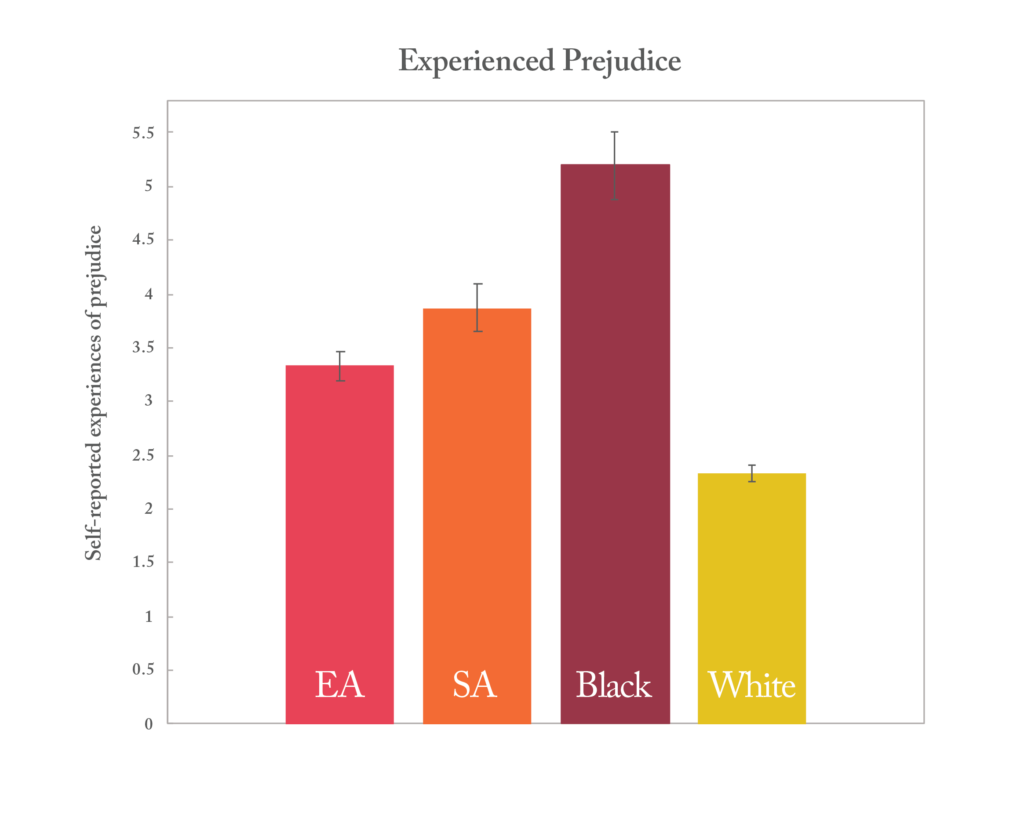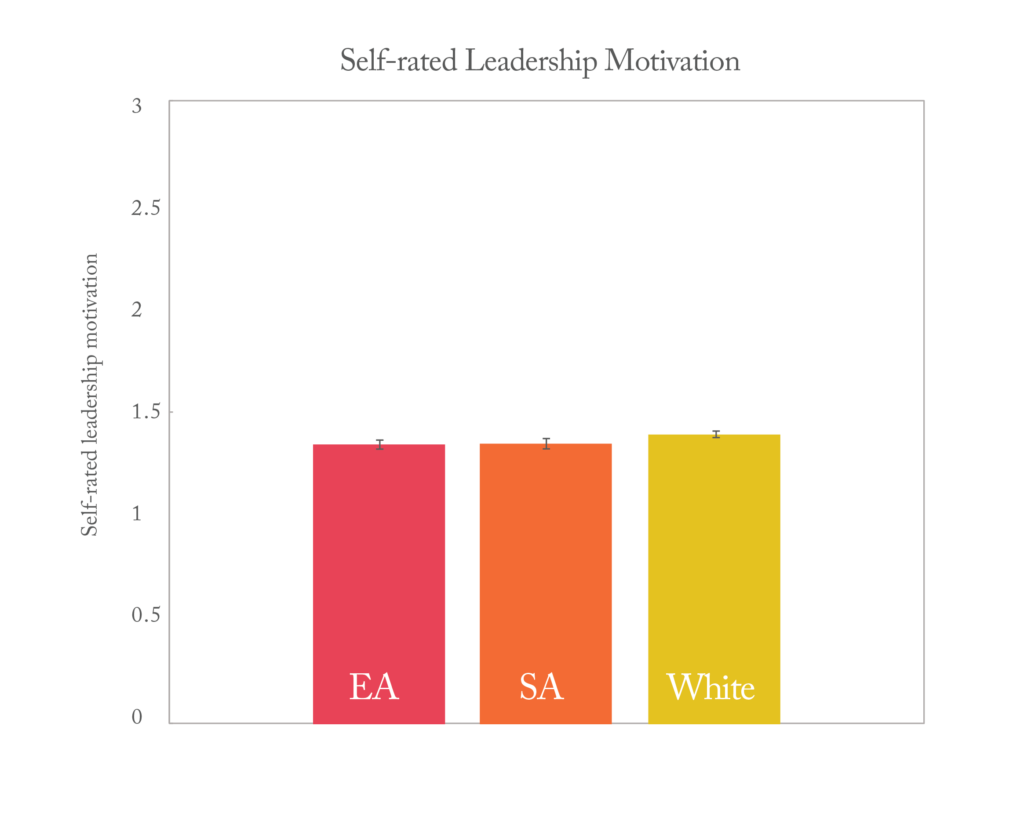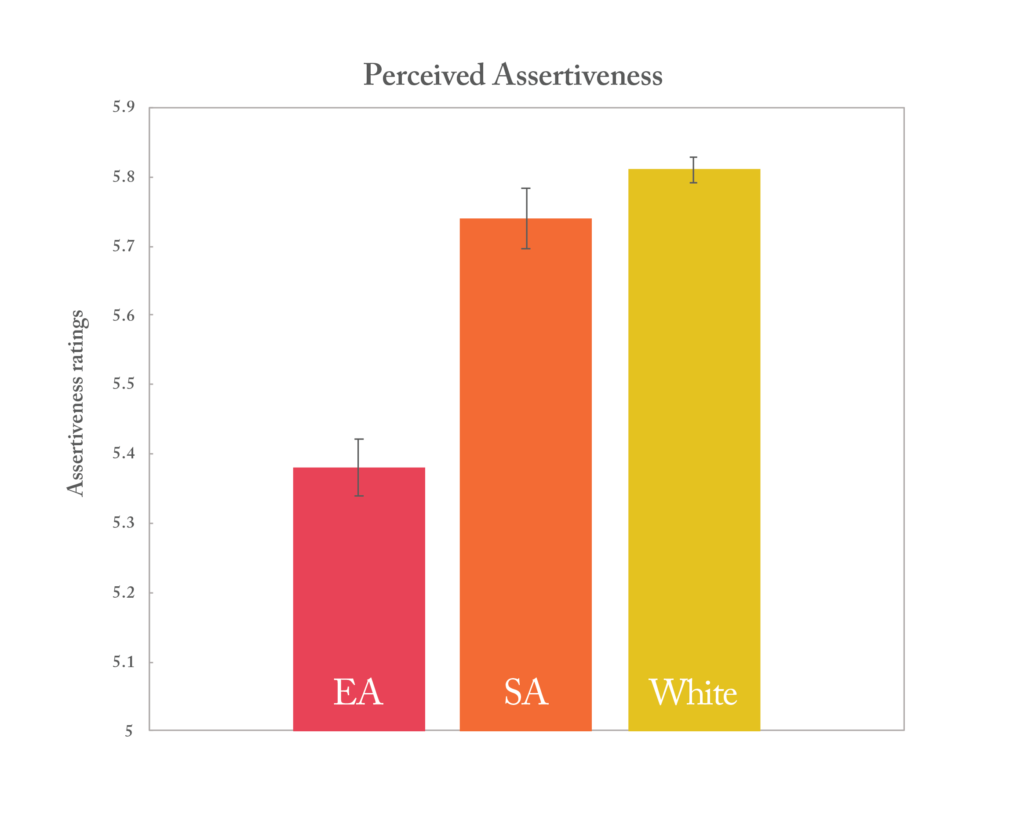Featured
Lessons from the Bamboo Ceiling

“The superior man wishes to be slow in his speech and earnest in his conduct.”
—attributed to Confucius (551–479 BCE), from the Analects
The last year has intensified scrutiny of social injustices based on race, ethnicity, and gender, with bias against Asians—especially in the United States—attracting particular attention in recent months. Hate crimes against Asians spiked 164% in the first quarter of 2021 compared with the same period in 2020, according to a report from California State University’s Center for the Study of Hate and Extremism. Although multiple forces have contributed to the surge, one factor may be resentment toward Asians because of their perceived wealth and professional success.
The reality is far more nuanced, according to Jackson Lu, Mitsui Career Development Assistant Professor of Work and Organization Studies at the MIT Sloan School of Management. “Asians are known as the model minority in the United States, where one joke is that ‘I must get an A because I am an Asian—not a Bsian,’” he said at a presentation for an April 2021 APS expert panel on the psychological science of racism. Yet despite having the highest educational attainment, highest median income, and lowest unemployment rate of any racial or ethnic group in the United States (Hsin & Xie, 2014; U.S. Census Bureau, 2019; U.S. Department of Labor, 2019), Asians are underrepresented in U.S. leadership positions.
In a groundbreaking 2020 article published in Proceedings of the National Academy of Sciences, Lu and APS William James Fellow Richard E. Nisbett of the University of Michigan, Ann Arbor, and Michael W. Morris of Columbia University conducted a series of 9 studies of Asian Americans and other Asians in the United States. The studies employed mixed methods (archival analyses of chief executives, field surveys in large U.S. companies, MBA leader nominations and elections, and experiments). In one study, they analyzed data from companies on the S&P 500—a stock market index that reflects the value of the largest U.S. companies—and found just 16 Asian CEOs in 2017, compared to 440 White CEOs. Viewed another way, although Asians made up roughly 6% of the country’s population at that time, they represented only 3% of the CEOs of S&P 500 firms. A 2015 study by the Ascend Foundation, a nonprofit organization for Asian professionals, analyzed the number of employees in the management pipeline of five large technology companies (Google, LinkedIn, Yahoo, Hewlett-Packard, and Intel). Asians were found to be well represented in the companies’ nonmanagerial workforces but underrepresented at the executive level.

Lu further addressed this disparity in the APS briefing. About 11% of associates at U.S. law firms are Asian, but only 3% of partners are, he said. Even in technology, where Asians are the ethnic group most likely to be hired (over 30% of the workforce), they are the least likely to be promoted to senior leadership positions (less than 15% of executives).
Lu and others call this phenomenon the “bamboo ceiling,” using the term Jane Hyun coined in her 2005 book, Breaking the Bamboo Ceiling: Career Strategies for Asians. Like the metaphorical glass ceiling, which refers to the invisible barriers preventing women from attaining leadership positions in their fields, the bamboo ceiling describes the barriers keeping qualified Asians from attaining leadership positions in the U.S.
The illusion of Asian success
For decades, Asians have been perceived by many as the “model minority”: quiet, hardworking, studious, and rule-abiding. William Peterson, a sociologist at the University of California, Berkeley, coined the term “model minority” in a 1966 New York Times article praising the ability of Japanese Americans to succeed in the United States. However, the type of seemingly positive stereotyping that Peterson described carried negative consequences. First, it set up an implicit comparison with other minority groups, such as African Americans, and ignored the history and influence of racism in the United States. Second, it ignored the diversity within the Asian community (e.g., Lee et al., 2017). And third, it created a harmful myth about Asians (e.g., Cheryan & Bodenhausen, 2000; Czopp, Kay, & Cheryan, 2015; Kawaguchi, 2003; Suyemoto, Kim, Tanabe, & Day, 2009; Zhang, 2010).
One way the model minority myth is harmful to Asians is that it makes them invisible. “I think precisely because Asians are believed to be the model minority doing just fine, they have received limited attention from scholars and practitioners alike,” Lu said at the APS briefing.
To understand the reasons for the bamboo ceiling, Lu and colleagues sought to tear down the positive stereotype of the model minority and look at differences between Asian subgroups in the United States. Across nine studies with more than 11,000 participants, their 2020 article compared the leadership attainment of East Asians (e.g., from Chinese, Korean, Japanese ancestry) and South Asians (e.g., from Indian, Pakistani, Bangladeshi ancestry) and questioned whether cultural differences between those groups could explain different patterns of success in leadership attainment.
In an email to the Observer, Lu explained what led to this approach: “Despite the widespread discussion about the ‘bamboo ceiling,’ it occurred to me that in contrast to the paucity of East Asian CEOs in the United States, well-known companies such as Citigroup, Google, MasterCard, Medtronic, Microsoft, and PepsiCo have all been led by South Asian CEOs. This observation led me to investigate whether the bamboo ceiling is a cultural issue rather than an ‘Asian’ issue.”

In their 2020 article, Lu, Nisbett, and Morris found that South Asians were more likely than East Asians to achieve executive leadership in the United States. For instance, of those 16 Asian CEOs in the S&P 500 in 2017, only three were East Asian, whereas 13 were South Asian (Lu et al., 2020). This pattern was consistent across the years and held across companies in the S&P 1500, which represent over 90% of U.S. market value. The discrepancy is even more striking in light of the fact that the United States’ East Asian population is about 1.6 times larger than the South Asian population.
In exploring the reasons for this pattern, Lu and colleagues found that the differences between East Asians and South Asians extended to members of those minority groups who had been born in the United States, indicating that English fluency was not solely responsible for East Asians’ disadvantage in leadership. After interviewing diversity offices, employees, and managers, the researchers examined three potential mechanisms that might explain why East and South Asians were so differently represented in leadership positions: prejudice, motivation, and communication assertiveness.
The first two mechanisms did not account for the disparate experiences of East and South Asians. For instance, in measuring experienced prejudice in a sample of MBA students at a top business school, the researchers found that South Asian students reported experiencing more prejudice than East Asian students. Similarly, when the researchers measured prejudice from non-Asian Americans toward Asian Americans, they found greater prejudice toward South Asians than East Asians. In his communication with the Observer, Lu mentioned a few possible reasons for higher prejudice against South Asians, including their darker skin tone and physical resemblance to certain Middle Easterners. “For instance, South Asians unfortunately experienced considerable ethnic hostility in the aftermath of the 9/11,” Lu explained.
Nor did different levels of motivation to become leaders account for the bamboo ceiling. Lu and colleagues found that East and South Asian MBA students did not differ in leadership motivation. A previous survey had also suggested that, compared with non-Asians, in fact, Asians were more likely to aspire to high-ranking jobs (64% vs. 52%; Hewlett, 2011).
That left the last plausible explanation: assertiveness, or the tendency to stand up and speak out for one’s interests and concerns when appropriate. Indeed, when the researchers examined assertiveness, they found that East Asians were consistently less assertive than South Asians, as measured via both self-report and other-report. Additionally, East Asians, but not South Asians, were less assertive than Whites. These cultural differences in assertiveness also occurred when Lu and colleagues examined employees from S&P 500 companies. Overall, East Asians’ tendency to be less assertive appeared to be one of the main barriers to their leadership attainment.
“So why is assertiveness important for leadership attainment?” Lu asked in the APS presentation. “It is important because according to implicit leadership theory, individuals are less likely to attain leadership positions when their characteristics fail to match the cultural prototype of leaders.” Asserting one’s opinions signals confidence, motivation, and conviction—all characteristics of the prototypical U.S. leader, he added.
Shattering the ceiling
To a large degree, these ethnic differences in assertiveness can be attributed to culture. Strongly influenced by Confucianism, East Asian cultures are characterized by humility, conformity, and interpersonal harmony. Consider proverbs such as “the nail that sticks out gets hammered down,” in contrast to Western proverbs such as “the squeaky wheel gets the oil,” explained Lu. This cultural difference appears to impact East Asians’ communication style.
South Asian cultures, on the contrary, encourage assertiveness in communication, as exemplified by the Indian tradition of argumentation and debate (see, e.g., the 2005 book The Argumentative Indian by economist and Nobel Prize winner Amartya Sen).

In his email to the Observer, Lu offered some suggestions for how to resolve the mismatch between East Asians’ communication style and American leadership expectations.
“Critically, the onus of breaking the bamboo ceiling should not fall on East Asians themselves. American organizations should evolve their implicit prototype of leadership to fit a diversifying workforce and recognize that there can be more than one successful leadership style,” Lu explained. “For example, American organizations could benefit from East Asian cultures’ group-focused, protection-oriented leadership style. By appreciating diverse leadership styles, American organizations can better leverage East Asian leadership talent—especially since East Asians appear no less interested in leadership roles than South Asians or Whites.”
American corporations must also understand cultural differences among different Asian subgroups rather than lumping all Asians together, Lu said. For example, an East Asian person’s quiet reserve may reflect a cultural tendency to value humility, not the absence of an opinion to share. Many U.S. organizations have employee resource groups aimed at fostering a diverse, inclusive workplace, but they typically designate just one group for all Asians, ignoring the cultural differences among subgroups.
At the individual level, East Asians might benefit from increased awareness of this cultural difference. “East Asians should be informed that their cultural tendency to prioritize humility, harmony, and hierarchy may impede them from attaining leadership in the U.S.,” Lu said. “They could benefit from communication training that focuses on assertiveness. For example, the East Asian former Democratic presidential candidate Andrew Yang [whose parents emigrated to the United States from Taiwan] actively practiced debate and represented the U.S. national debate team in the world championships.”

In his presentation, Lu also highlighted another part of the problem East Asians might face: “People not only believe that East Asians are non-assertive, but also believe that East Asians should be non-assertive.” As a result, East Asians are in a double-bind: When they are not assertive, they are less likely to attain leadership, but when they are assertive, they risk being viewed as “too assertive.” This emphasizes the need for American corporations and their employees to rethink and evolve their implicit prototype of leadership, Lu said.
Glass and Bamboo Ceilings: Intersectional Stereotypes?
The “glass ceiling” refers to the invisible barriers that women often encounter in the workplace that prevent them from ascending to the same leadership levels as men. The “bamboo ceiling” refers to similar barriers faced by Asians. Thus, it might be fair to say that Asian women may have to break through a double ceiling to achieve the professional acknowledgement they deserve.

In a 2018 qualitative study, Shruti Mukkamala (University of California, Irvine) and Karen L. Suyemoto (University of Massachusetts, Boston) found that Asian American women’s experiences of discrimination occurred at both the personal and professional levels. These experiences could be grouped in 15 common themes of discrimination, as evidenced in the ways they felt others perceived them: tokenist representative of Asian Americans, mislabeled/assumed ethnicity, foreigner, excluded, smart and/or inevitably successful, culture-based discrimination, criminal, bad driver, denying experiences of discrimination, exotic, not a leader, submissive and passive, cute and small, invisible, and service worker.
Indeed, research has found that Asian women are the least likely group to ascend to positions of power when compared with Asian men and White women. The Ascend Foundation, a nonprofit that advocates for Pan-Asians in North America, analyzed 2018 data from the U.S. Equal Employment Opportunity Commission (EEOC) and examined senior leadership in companies in all industries by race and gender. This led to the use of the Executive Parity Index (EPI) as a metric to compare representation in executive leadership.
Overall, the EPI showed that:
- White men are 165% more likely to be executives than White women
- Asian men are 112% more likely to be executives than Asian women
- White men are 192% more likely to be executives than Asian men
- White women are 134% more likely to be executives than Asian women
Feedback on this article? Email [email protected] or scroll down to comment.
References
Center for the Study of Hate and Extremism. (2021). Report to the nation: Anti-Asian prejudice & hate crime. New 2020‐21 first quarter comparison data. California State University, San Bernardino. csusb.edu/sites/default/files/Report to the Nation – Anti-Asian Hate 2020 Final Draft – As of Apr 30 2021 6 PM corrected.pdf
Cheryan, S., & Bodenhausen, G. V. (2000). When positive stereotypes threaten intellectual performance: The psychological hazards of “model minority” status. Psychological Science, 11(5), 399–402. https://doi.org/10.1111/1467-9280.00277
Czopp, A. M., Kay, A. C., & Cheryan, S. (2015). Positive stereotypes are pervasive and powerful. Perspectives on Psychological Science, 10(4), 451–463. https://doi.org/10.1177/1745691615588091
Hewlett, S. A. (2011). Breaking through the bamboo ceiling. Harvard Business Review, 3. https://hbr.org/2011/08/breaking-through-the-bamboo-ce
Hsin, A., & Xie, Y. (2014). Explaining Asian Americans’ academic advantage over whites. Proceedings of the National Academy of Sciences, USA, 111(23), 8416–8421. https://doi.org/10.1073/pnas.1406402111
Kawaguchi, S. (2003). Ethnic identity development and collegiate experience of Asian Pacific American students: Implications for practice. Journal of Student Affairs Research and Practice, 40(3), 13–29. https://doi.org/10.2202/1949-6605.1248
Kim, T., Peck, D., & Gee, B. (2020). Race, gender & the double glass ceiling: An Analysis of EEOC National workforce data. Ascend Foundation. ascendleadershipfoundation.org/research/race-gender-doubleglass-ceiling
Lee, S., Xiong, C., Pheng, L. M., & Vang, M. N. (2017). The model minority maze: Hmong Americans working within and around racial discourses. Journal of Southeast Asian American Education and Advancement, 12(2), 1–20. https://doi.org /10.7771/2153-8999.1153
Lu, J. G., Nisbett, R. E., & Morris, M. W. (2020). Why East Asians but not South Asians are underrepresented in leadership positions in the United States. Proceedings of the National Academy of Sciences, 117(9), 4590-4600. https://doi.org/10.1073/pnas.1918896117
Mukkamala, S., & Suyemoto, K. L. (2018). Racialized sexism/sexualized racism: A multimethod study of intersectional experiences of discrimination for Asian American women. Asian American Journal of Psychology, 9(1), 32–46. https://doi.org/10.1037/aap0000104
Suyemoto, K. L., Kim, G.S., Tanabe, M., Tawa, J., & Day, S.C. (2009). Challenging the model minority myth: Engaging Asian American students in research on Asian American college student experiences. New Directions for Institutional Research, 142, 41–55. https://doi.org/10.1002/ir.295
U.S. Census Bureau. (2019). Income and poverty in the United States: 2018 (Current Population Report No. P60-266). census.gov/content/dam/Census/library/publications/2019/demo/p60-266.pdf
U.S. Department of Labor. (2019). [Labor force statistics from the Current Population Survey.] https://data.bls.gov/timeseries/LNS14000003&series_id=LNS14000006&series_id= LNS14032183&series_id=LNS14000009https:/data.bls.gov/pdq/SurveyOutputServlet
Zhang, Q. (2010). Asian Americans beyond the model minority stereotype: The nerdy and the left out. Journal of International and Intercultural Communication, 3(1), 20–37. https://doi.org/10.1080/17513050903428109





APS regularly opens certain online articles for discussion on our website. Effective February 2021, you must be a logged-in APS member to post comments. By posting a comment, you agree to our Community Guidelines and the display of your profile information, including your name and affiliation. Any opinions, findings, conclusions, or recommendations present in article comments are those of the writers and do not necessarily reflect the views of APS or the article’s author. For more information, please see our Community Guidelines.
Please login with your APS account to comment.